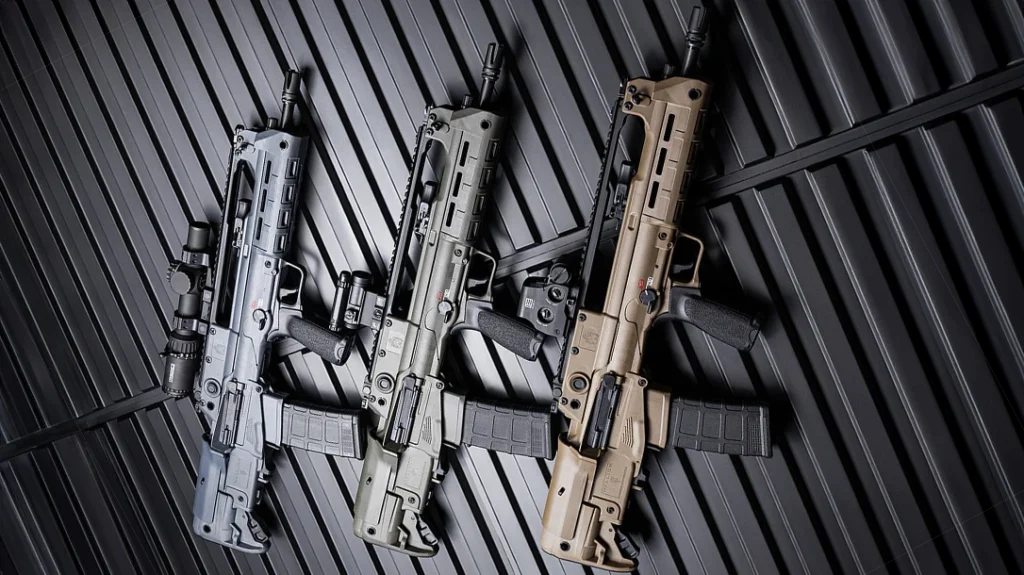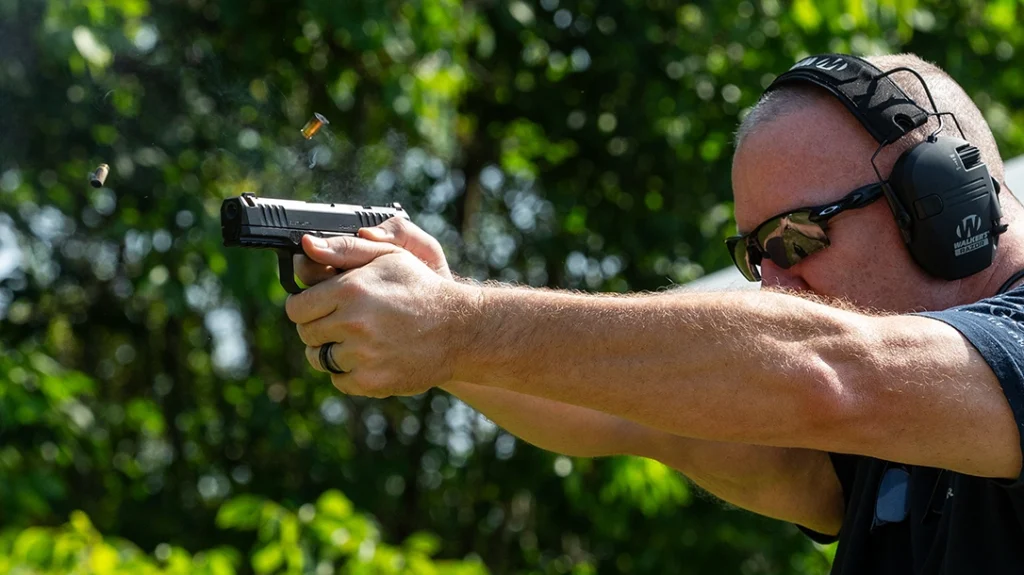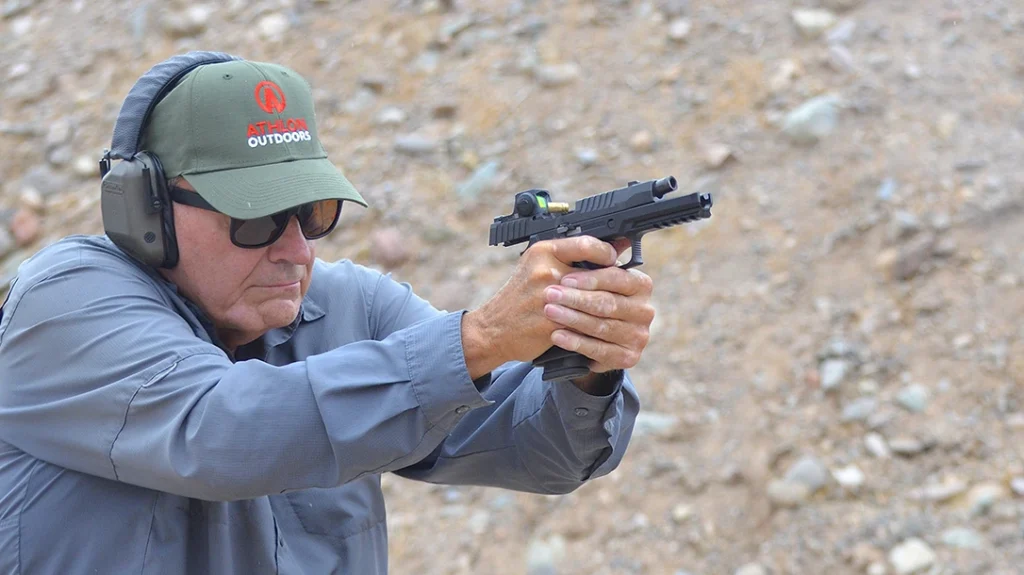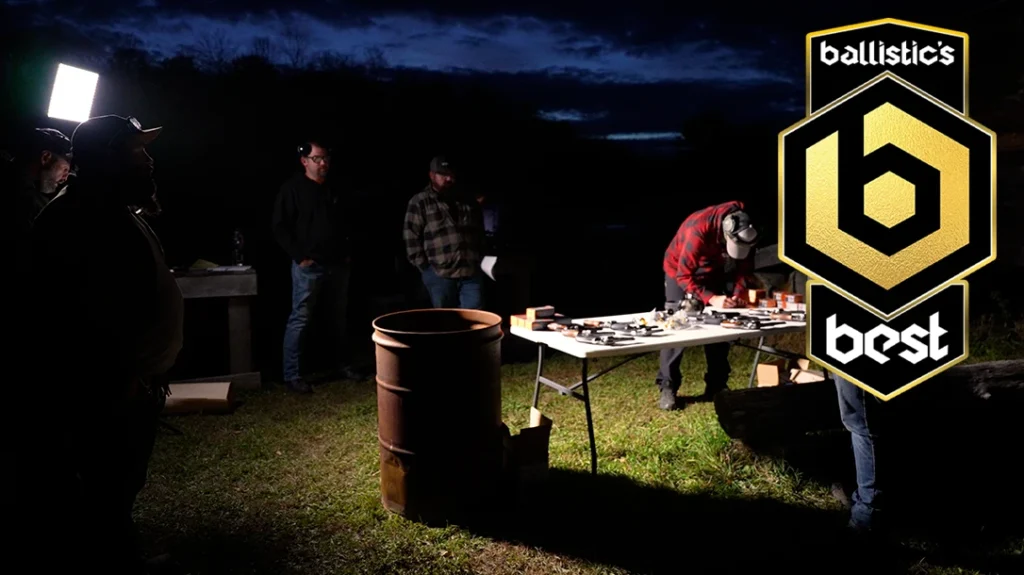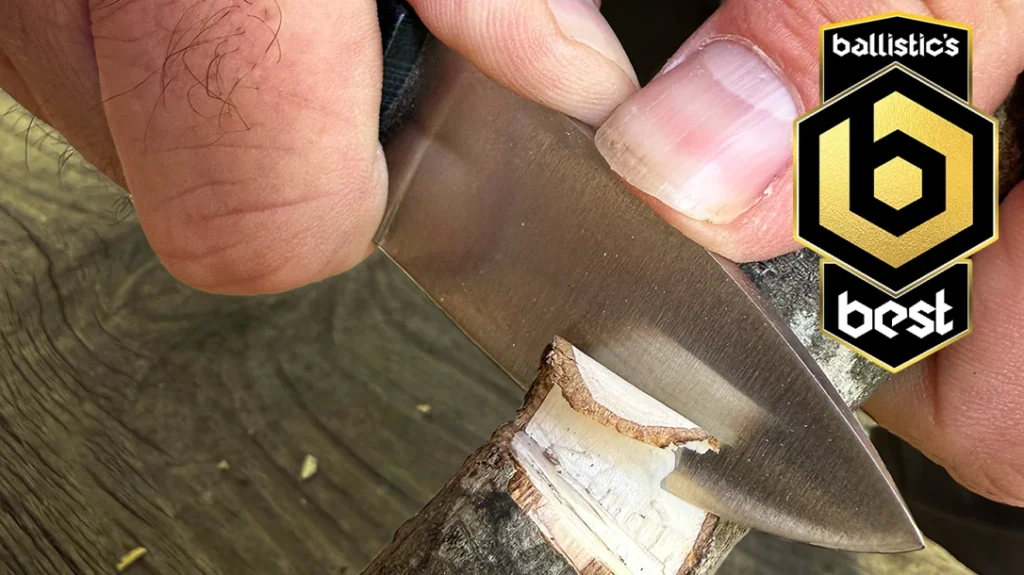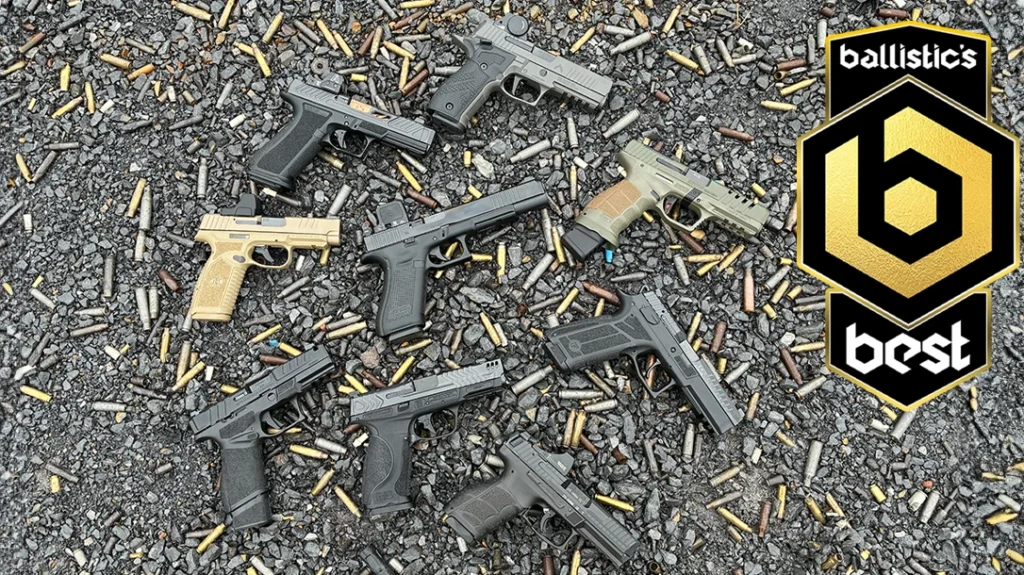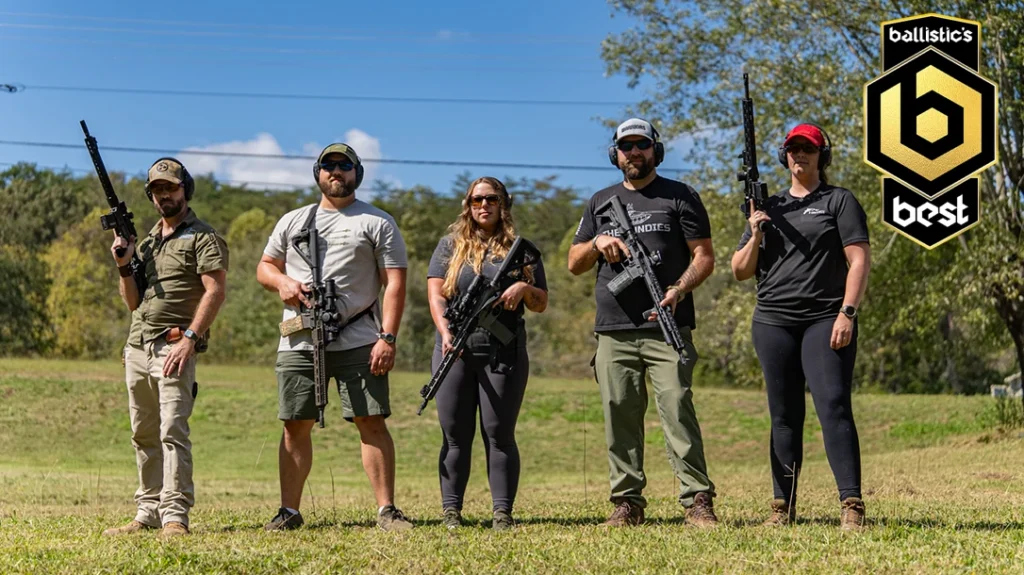June 28, 1874 was the third day of a siege by 700-plus Comanche, Kiowa, Cheyenne and Arapaho warriors at a small trading post called Adobe Walls, Texas. Among the 28 besieged Buffalo hunters was 24-year-old Billy Dixon. During a lull in the action, a group of mounted Indian warriors gathered on a distant bluff approximately one mile away. Dixon borrowed a Sharps rifle in .50-90, firing a .50-caliber, 600-grain lead bullet with a 125-grain charge of blackpowder. Holding high, Dixon carefully squeezed off a shot, and a distant warrior fell from his horse.
Sharps Gemmer Long-Range Rifle
While the frontier legend says the warrior was killed, the Indians later insisted he was only hit in the arm. Later measured at an astounding 1,538 yards, or 7/8 of a mile, this became known as the Shot of the Century, and ended the siege. That Billy Dixon fired the Shot of the Century with a single-shot Sharps rifle definitely qualifies the Sharps as a long-range rifle.
J. P. Gemmer was a St. Louis, Missouri gunsmith working in the legendary Hawken Rifle Shop until he purchased the shop in 1865. During the Civil War, Gemmer was employed as a gunsmith at the U. S. Arsenal located in St. Louis. After purchasing the Hawken Shop he was known for producing high-quality custom rifles until retiring in 1915. While originally producing percussion Hawken single-shot rifles, once breechloading rifles became the norm, Gemmer specialized in building custom Hawken-style rifles using Sharps and Remington rolling block actions. He most likely used his own barrels as well as installing Hawken-style buttstocks and key secured fore ends with under rib, thimbles and ramrod.
Advertisement — Continue Reading Below
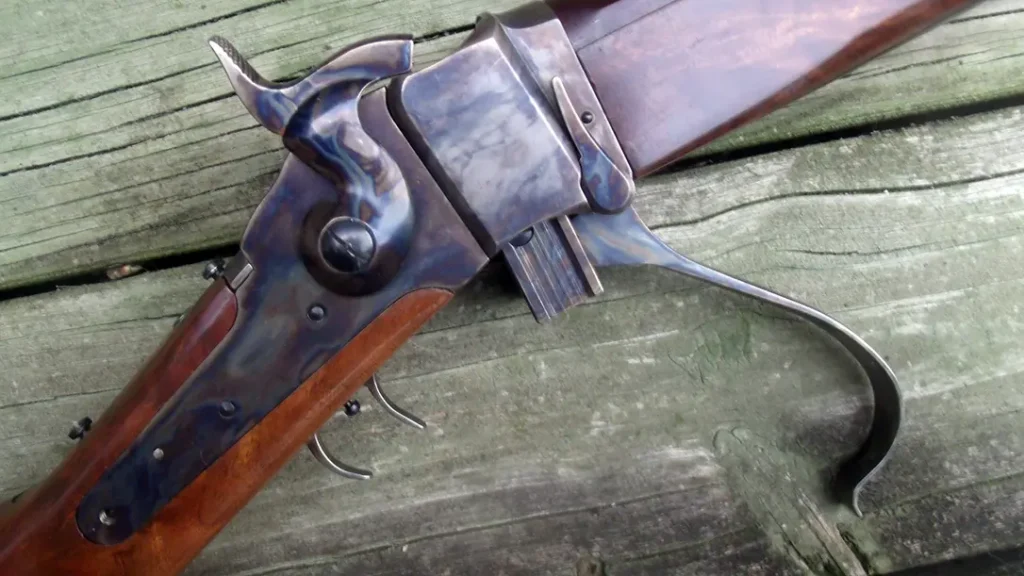
Taylor’s & Company .45-90 Sharps
Recently my friend Steve offered me an unfinished, partially assembled Taylor’s & Company .45-90 caliber Sharps with all the parts required to convert it to a Gemmer Sharps. Having spent 45 years employed by a Department of Defense mapping agency located at the St. Louis Arsenal, I had a special interest in gunsmith Gemmer. I immediately purchased the unfinished Gemmer Sharps rifle.
My Taylor’s & Company Sharps rifle is marked “Armi Sport-Italy Black Powder Only 45/90 WCF” in two lines on the 30-inch heavy, octagonal barrel. It has an attractive color case-hardened action and double set triggers.
Advertisement — Continue Reading Below
The Gemmer Sharps Conversion
Steve talked Pecatonica River Long Rifle Supply, who produces very high quality Hawken Plains Rifle kits, into producing the necessary wood and accessories to turn his Shilo Sharps into a Gemmer Sharps rifle. This included the buttstock and forend, along with iron butt plate, ramrod thimbles, forend cap, keys and key plates, Hawken-style adjustable rear sight, dovetail mounted German silver blade front sight and under barrel rib. He obtained a second set of parts for my Taylor’s & Company Sharps, and my walnut is of exhibition grade and finished out beautiful.
Not being a machinist, I do not drill and tap parts for screw mounting, and as a hobby gunsmith I do not have the required equipment to silver solder. However, I have had 100% success using J. B. Weld epoxy in place of screws and/or silver solder.
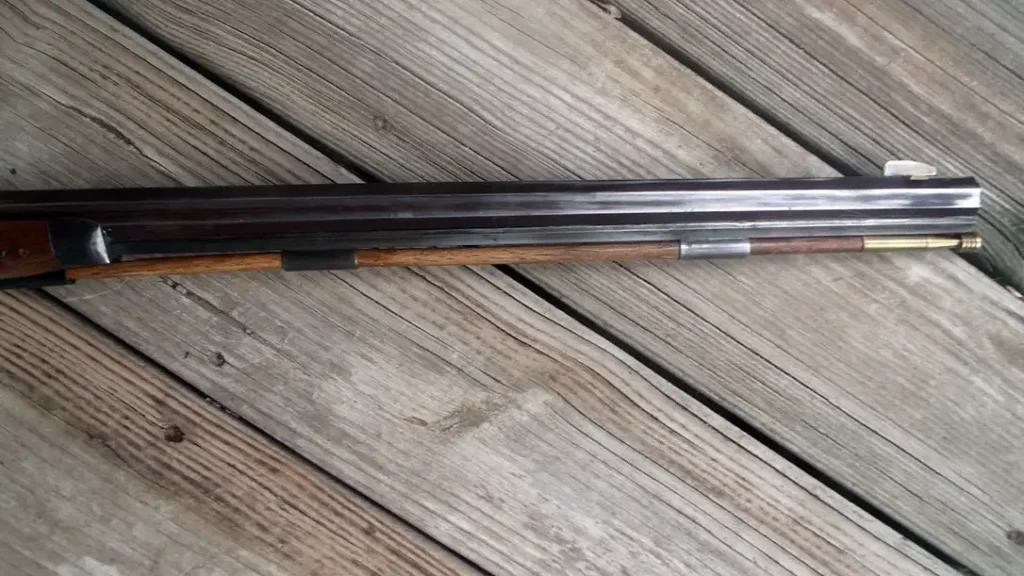
Advertisement — Continue Reading Below
Working the Wood
The buttstock was a bit oversized for the buttplate, so I worked it down with a wood rasp and coarse sandpaper. A bit of rasping and sanding had the forend fitting the action and barrel properly. With the forend in place, I attached the under barrel rib to the barrel with J. B. Weld. Once the epoxy had secured, I used the J. B. Weld to attach the two thimbles to the under barrel rib. The wood to metal fit was 90% from Pecatonica River Long Rifle Supply
And a bit of work with wood rasps and coarse sandpaper soon had all wood-to-metal fit acceptable. Sanding with grades 200 through 600 wet or dry emory paper soon had the wood ready for the finish. For many years, I have been using Birchwood Casey brand Tru Oil for a superb hand-rubbed high-gloss oil finish. Applied according to the directions, it once again brought out the exceptional grain pattern of the exhibition grade walnut.
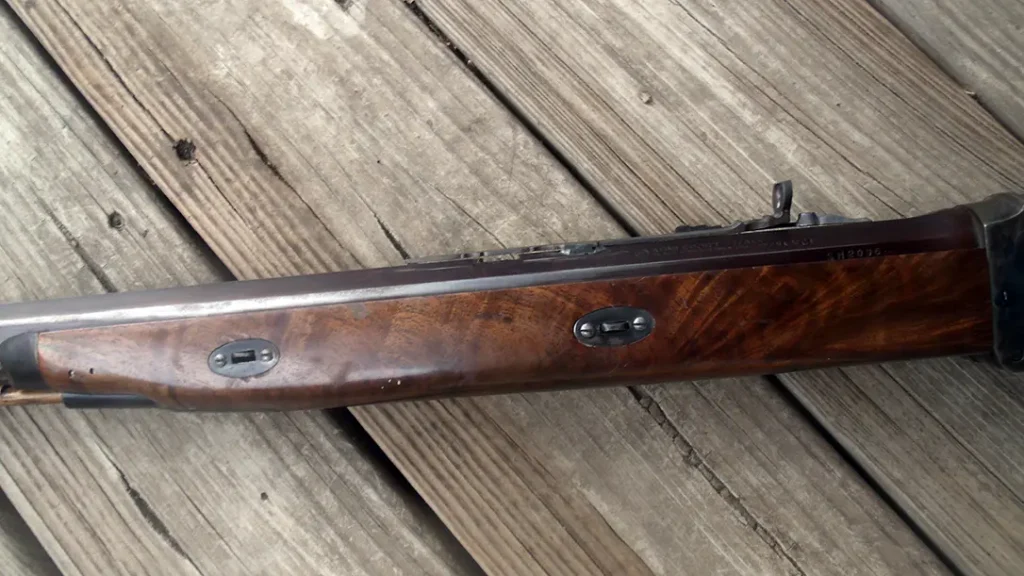
Advertisement — Continue Reading Below
The Ammo Problem – Solved
Not having a source for .45-90 loaded ammunition, I was at a loss as to how to shoot my new Gemmer Sharps rifle. Then I realized that just as the .44 Magnum is a stretched .44 Special, the .45- 90 is a stretched .45-70. So a .45-70 cartridge will safely function and fire in a .45-90 chambered rifle. I was able to obtain factory .45-70 ammunition for test firing. This was Black Hills Ammunition .45-70 with a 405-grain round nose flat point lead bullet. I test fired my new rifle off the bench at 50 yards. And the last two shots, after I had it sighted in, were at point of aim and 2 1/8 inches apart. Good enough to hit a Buffalo.

